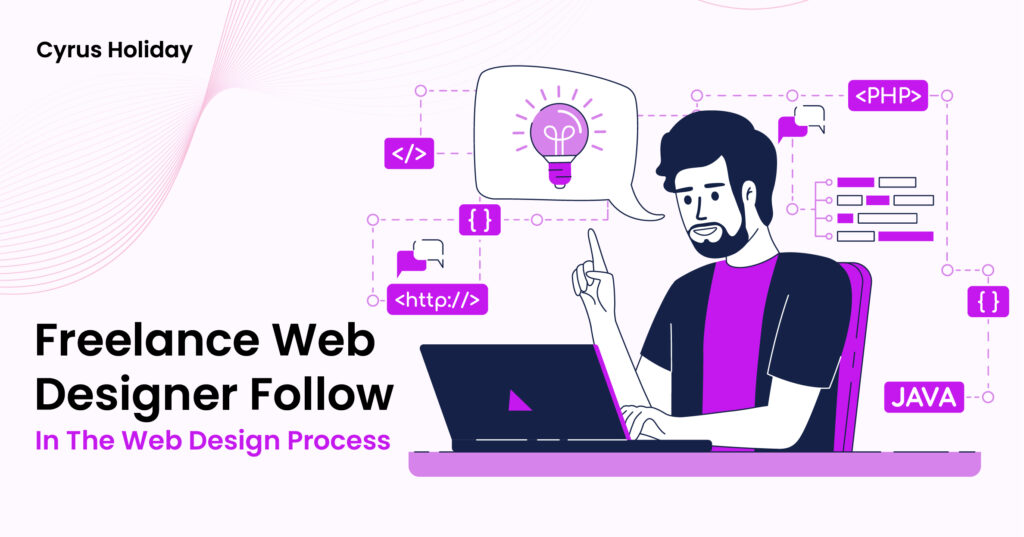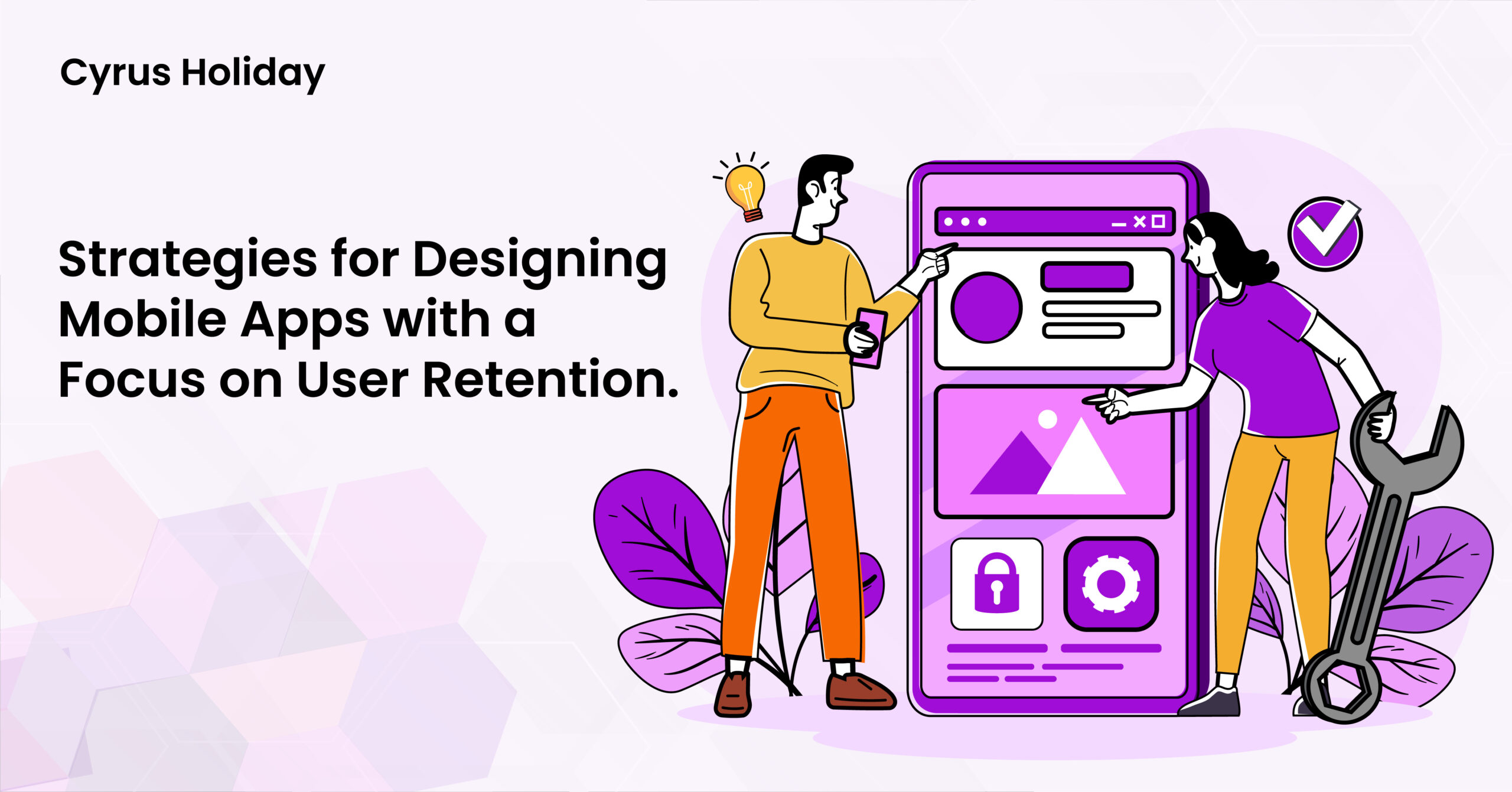7 Stages A Freelance Web Designer Follow In The Web Design Process.

Table of Contents
Every business needs a website that is good yet attractive. Therefore, it is necessary to standardize the web design process.
As a freelance web designer, it’s important to have a process that you follow to ensure that each project is successful. While every designer has their way of working, there are some common stages that most designers will go through.
In this blog post, I’ll look at 7 of the most important stages in the web design process, from information gathering to launch and beyond. By following these steps, you can be sure that you’re covering all of the bases and delivering a high-quality product to your client.
- Why does web design matter?
A well-structured and clear website not only increases traffic but also easily helps visitors to understand the brand. The services they are delivering. Hence, a better user experience helps businesses reach more clients.
Hence being a Freelance web designer, when you reach me, I will help you to determine the best possible results to make your business shine.
Your clients care about your website design, be it or not; it reflects how they react to visuals. People are naturally drawn toward good design. Regarding website design, research has repeatedly shown that users quickly judge your business.
However, some stats will help you undertake the website design.
- 75-80% of the users judge the company’s credibility based on visual design.
- 94% of the user’s first impression draws with the help of good design.
- As it only takes 50 milliseconds to form a first impression of website design
- Phases of Web Design Process:
There are seven distinct stages that most freelance web designers go through when taking on a new project. By understanding and following these steps, you can ensure a smooth web design process that will result in a high-quality, successful website.
2.1 Gathering of information
The first stage is to discuss the project with the client and gather all relevant information.
This includes things like the purpose of the website, the target audience, any specific features that must be included, and any branding or design guidelines that must be followed. Once you have this information, you can start to put together a proposal for the project.
The web designer will need to gather information about the client’s business, their target audience, and what they want to achieve with their website. They will also need to research the competition and understand what they are doing well and what they could improve on. This research will help the web designer to create a website that meets the client’s needs and stands out from the competition.
2.2 Planning of website
The second stage is to create wireframes for the website. This helps to visualize the website’s structure and ensure that everything is logically laid out. It also allows for feedback from the client at an early stage, so that any changes can be made before too much work has been done.
The sitemap will outline all of the pages and content that will be on the website. The wireframes will be detailed sketches of each page, showing how the content will be laid out. This stage is important for ensuring that all website content is easy to find and navigate. The web designer will also need to decide which features and functionality are essential for the website and which can be included.
2.3 Designing matters
The third stage is to design the look of the website. This includes choosing colours, fonts, and other graphical elements. Once again, it is important to get feedback from the client at this stage to make sure they are happy with the direction of the design.
It is very essential to implement a design that can attract users and make them your potential leads. Being a Top dedicated freelance web designer, I assure you that businesses receive the best.
I ensure that I develop two or more prototypes so that there are chances of choices. Businesses like to see the versatility and their in-process works. However, it is good to create a clickable prototype to help clients know their website design development beforehand.
This involves writing code to create all of the pages and functionality required. Testing is also an important part of this stage, as it helps to identify any bugs or errors in the code.
2.4 Development phase
This stage is to launch the website and make it live for everyone to see. This usually involves transferring the files to a web server and setting up DNS records. Once the site is live, it’s important to monitor it closely and make sure everything is working as it should be.
At this point of design, mainly the design gets ready (but this is mainly the static image).
This stage is ongoing maintenance and support. Even after a website has been launched, there will still be some work required to keep it running smoothly. This might include adding new features or content, fixing bugs, or providing security updates.
The seventh and final stage is marketing and promotion. Once a website is live, it’s important to let people know about it! This can be done through various means such as social media marketing, search engine optimisation (SEO), or paid advertising. By promoting your website, you can help increase traffic and reach your target audience more effectively.
- Is your website making the right impression
One of the important tools that can help your business to shine is only your website first. It leaves a good impression when entitled to everything in the right manner. But to generate sales across, you need to have a good website design.
While a great website involves more than just the design, customers also want and expect an attractive visual layout. Hence if you are looking for a great website design, then reach me. I help businesses develop websites that can help you get started with a good web design.
- Your website is the front face of your business
Your website is the face of your business. When any users reach your website it draws attention towards your website layout/design only. That’s why it’s important to ensure your website is designed to attract and convert visitors.
In this blog post, we’ll look at web design’s impact on digital marketing strategy. We’ll cover search engine optimization, conversion rate optimization, and user experience. By the end of this post, you’ll better understand how to use web design to drive results for your business.
4.1 Search Engine Optimization
Your website needs to look professional and provide all the information they need to know about your products or services. Search engine optimization (SEO) is a digital marketing strategy that helps you ensure your website appears as high as possible in search engine results pages (SERPs). This makes it more likely that people will find and visit your site.
SEO involves optimizing your website content and structure so that search engines can easily index and understand it. This includes adding relevant keywords, creating informative and keyword-rich titles and descriptions, and providing a good user experience.
A well-optimized website will improve your visibility in SERPs and help you attract more qualified leads and convert them into customers. So if you want to ensure your website is working hard for your business, start with SEO.
4.2 Conversion Rate Optimization (CRO)
Business website is well-designed and easy to navigate so that potential customers can find what they’re looking for and make a purchase. A poorly designed website will not only turn potential customers away but also reflect poorly on the business itself.
Conversion rate optimization (CRO) is the process of improving the percentage of visitors to a website who take action, such as making a purchase or filling out a form. Businesses can increase sales and leads by optimizing the website for conversions without necessarily increasing traffic.
Several factors contribute to conversion rate, including website design, copywriting, calls to action, and user experience. To optimize conversions, businesses need to experiment with different elements on their website and track the results.
Some common conversion rate optimization techniques include A/B testing, testing different versions of a web page to see which one performs better, using persuasive copywriting, and creating an effective call to action.
Businesses can improve their website design and conversion rate optimization by taking the time to improve their bottom line and get more out of their digital marketing efforts.
4.3 User Experience
A website’s design also has a significant impact on its user experience. The user experience is a person’s overall experience when using a website, from the initial visit to the final interaction. A website that is difficult to navigate or slow to load will frustrate users and cause them to leave, while a well-designed website will keep users engaged and encourage them to take action. Businesses can increase sales and leads by optimizing their website for the best possible user experience. Several techniques can be used to optimize the user experience, including simplifying navigation, improving page speed, and providing relevant and engaging content.
Conclusion
For website design it is very necessary to have a great user design. However, if you tend to lose the necessary stages of web design then it is necessary to reach a dedicated freelance web designer like me. I will here help you to get started with the best website design that can attract the users and also help to gain the potential leads. Therefore with me you will be helpful to engage with the seven stages beforehand and in this manner, a good website design can be created.
Quality Service For You
We deliver unique and blended experiences to our customers across the globe. From idea to execution and launch, we do ALL.
Related Post
Epic Fantasy App Development Services: Creating Your Digital Worlds

